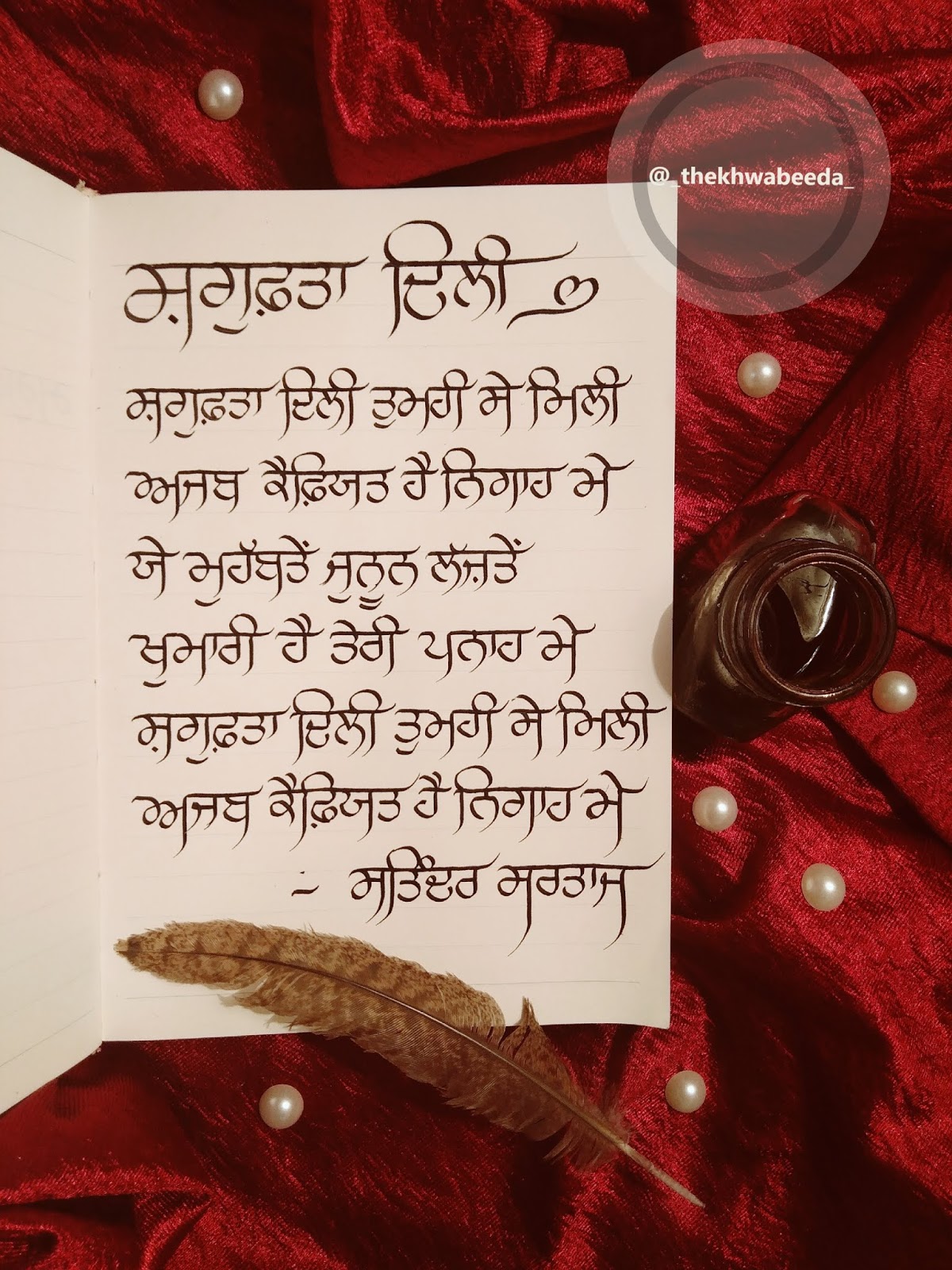

Gurmukhi Numbers Lesson 2: Gurmukhi Numbers 11 to 100 Gurmukhi Numbers Lesson 1: Gurmukhi Numbers from 0 to 10 Gurmukhi Alphabet Lesson 12: Gurmukhi Vowel Signs Group-2 Sihari and Bihari Gurmukhi Alphabet Lesson 11: Gurmukhi Vowel Signs Group-1 Mukta and Kanna Gurmukhi Alphabet Lesson 10: Gurmukhi Alphabet Group-8 ਜ਼, ਫ਼ and ਲ਼ Gurmukhi Alphabet Lesson 9: Gurmukhi Alphabet Group-8 ਸ਼, ਖ਼ and ਗ਼ Gurmukhi Alphabet Lesson 8: Gurmukhi Alphabet Group-7 ਯ, ਰ, ਲ, ਵ and ੜ Gurmukhi Alphabet Lesson 7: Gurmukhi Alphabet Group-6 ਪ, ਫ, ਬ, ਭ and ਮ

Gurmukhi Alphabet Lesson 6: Gurmukhi Alphabet Group-5 ਤ, ਥ, ਦ, ਧ and ਨ Gurmukhi Alphabet Lesson 5: Gurmukhi Alphabet Group-4 ਟ, ਠ, ਡ, ਢ and ਣ

Gurmukhi Alphabet Lesson 4: Gurmukhi Alphabet Group-3 ਚ, ਛ, ਜ, ਝ and ਞ Gurmukhi Alphabet Lesson 3: Gurmukhi Alphabet Group-2 ਕ, ਖ, ਗ, ਘ and ਙ Gurmukhi Alphabet Lesson 2: Gurmukhi Alphabet Group-1 ੳ, ਅ, ੲ, ਸ and ਹ The Padma Shri came her way in 1969 and finally, Padma Vibhushan, India's second highest civilian award in 2004, and in the same year she was honoured with India's highest literary award, given by the Sahitya Akademi (India's Academy of Letters), the Sahitya Akademi Fellowship given to the "immortals of literature" for lifetime achievement.Gurmukhi Alphabet Lesson 1: Introduction to Punjabi Language She received the Bhartiya Jnanpith, one of India's highest literary awards in 1982 for Kagaz Te Canvas (The Paper and the Canvas).

Known as the most important voice for the women in Punjabi literature, in 1956, she became the first woman to win the Sahitya Akademi Award for her magnum opus, a long poem, Sunehe (Messages). When British India was partitioned into the independent states of India and Pakistan in 1947, she migrated from Lahore to India, though she remained equally popular in Pakistan throughout her life, as compared to her contemporaries like Mohan Singh and Shiv Kumar Batalvi. The novel was made into an award-winning eponymous film in 2003. As a novelist, her most noted work was Pinjar (The Skeleton) (1950), in which she created her memorable character, Puro and depicted loss of humanity and ultimate surrender to existential fate. She is most remembered for her poignant poem, Aj Aakhaan Waris Shah Nu (Today I invoke Waris Shah - "Ode to Waris Shah"), an elegy to the 18th-century Punjabi poet in which she expressed her anguish over massacres during the partition of India in 1947. With a career spanning over six decades, she produced over 100 books, of poetry, fiction, biographies, essays, a collection of Punjabi folk songs and an autobiography that were translated into several Indian and foreign languages. She was the leading 20th-century poet of the Punjabi language, who is equally loved on both the sides of the India-Pakistan border. Amrita Pritam (Punjabi: ਅਮ੍ਰਿਤਾ ਪ੍ਰੀਤਮ, امرتا پریتم ) was considered the first prominent woman Punjabi poet, novelist, and essayist.


 0 kommentar(er)
0 kommentar(er)
